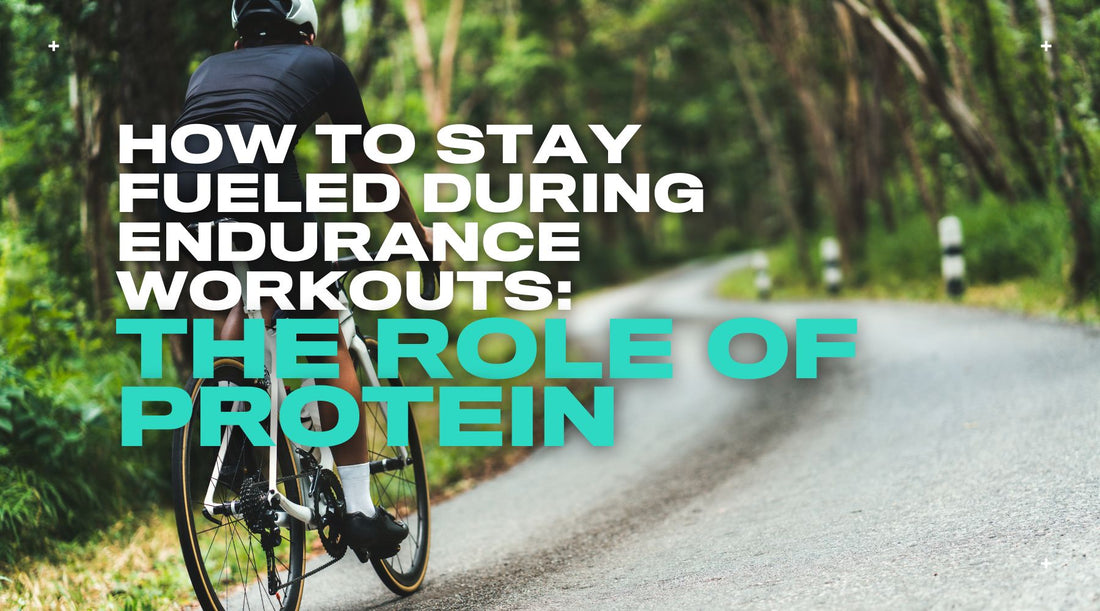
How to Stay Fueled During Endurance Workouts: The Role of Protein
Whether you're clocking up miles on a long-distance run, pushing pedals on a multi-hour ride, or grinding through a gruelling triathlon session, the right fuel can make or break your performance. While carbs are often the go-to for endurance athletes, protein plays a critical role in energy stability, recovery, and muscle preservation.
In this guide, we break down the science of protein during endurance training, how to combine it effectively with carbs, and why Roam’s clean, high-protein bars are an ideal snack to keep you going the distance.
Why Protein Matters in Endurance Workouts
Endurance sports push your body into sustained effort, often over hours. Most athletes know carbohydrates are the body’s primary fuel, but what happens when:
🧬 Muscle tissue starts to break down?
🧬 Energy levels crash mid-session?
🧬Recovery becomes slower between efforts?
This is where protein comes into play.
Key Benefits of Protein During Endurance:
🔧 Prevents muscle breakdown during long sessions
⚖️ Stabilises energy levels by balancing the effects of simple carbs
🔁 Supports faster recovery, even before the workout ends
🚀 Reduces post-workout soreness and fatigue
Research suggests that adding protein to carbohydrate intake during endurance activity can improve performance and reduce muscle damage—especially during events lasting longer than 90 minutes.

The Winning Combo: Protein + Carbs = Sustained Energy
For endurance athletes, it’s not about choosing carbs or protein—it’s about combining them strategically.
Best Practices:
🕒 Pre-workout: Combine slow-digesting carbs with some protein (e.g., oats + Roam bar or banana + Greek yoghurt)
⛽ Mid-workout (every 30-60 minutes depending on body size & weight): A blend of easily digestible carbs and protein can help sustain energy and reduce muscle loss
🧊 Post-workout: Refuel with a 3:1 ratio of carbs to protein for optimal recovery
Many bars focus only on sugar for quick energy. But without protein, you risk a sharp spike and crash, leaving you depleted halfway through.
Real-World Example: A Training Plan Snack Strategy
Here’s how a Roam bar might fit into an athlete’s long training session:
Pre-Workout (2–3 hours before):
Meal: Oatmeal topped with sliced banana and a tablespoon of almond butter.
Purpose: Provides complex carbohydrates for sustained energy and healthy fats for satiety.
Just Before Workout (15–30 minutes prior):
Snack: A small, easily digestible carbohydrate source, such as a slice of white bread with honey or a banana.
Purpose: Offers quick energy to kickstart the workout.
During Workout (every 45–60 minutes):
Fuel: Alternate between:
-
- A Roam bar (20g protein) for muscle support.
- Carbohydrate-rich options like energy gels, dried fruits (e.g., dates or raisins), or sports drinks.
Hydration: Consume water regularly and consider electrolyte-infused beverages to replenish lost minerals.
Purpose: Combining protein with carbohydrates helps maintain energy levels, supports muscle function, and delays fatigue.
Post-Workout (within 30 minutes):
Recovery Meal: A balanced meal containing carbohydrates and protein, such as grilled chicken with quinoa and steamed vegetables.
Alternative: A protein smoothie made with Greek yogurt, mixed berries, and a scoop of protein powder.
Purpose: Aids in muscle recovery, replenishes glycogen stores, and prepares the body for the next training session.
Why Roam Bars Are a Perfect Endurance Workout Snack
Most protein bars are designed for bodybuilders. They're dense, sweet, and often filled with artificial ingredients that don't sit well mid-run or ride. Roam bars are different.
Roam Bars Offer:
✅ 20g of high-quality, grass-fed beef protein
✅ Just 120 calories, making them light but effective
✅ Zero artificial sugars or preservatives
✅ A savoury, satisfying alternative to sweet, sticky gels
✅ Compact, shelf-stable, and no melting or squishing—ideal for backpacks, bike bags, or trail kits
Whether you're out for a multi-hour trail run or need a real-food snack during a long ride, Roam bars provide sustained, clean energy without the crash.
Final Thought
When it comes to endurance, energy management is everything. Carbs may power the pace, but protein protects your muscles, stabilises your fuel burn, and speeds up your recovery.
Roam bars offer a convenient, clean, and effective protein source designed to go the distance with you - whether you're on the track, the road, or the trail.
🔥 Roam. Real Fuel. Real Food.
Engineered for endurance. Made for movement.
Further Reading
How to Fuel for Long Rides and Runs Without Hitting The Wall! - My Pro Coach
What to Eat Before a Run (and What Foods to Avoid) - Very Well Health
